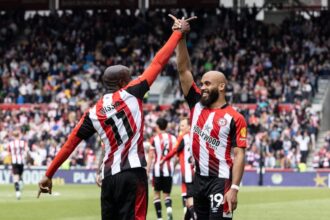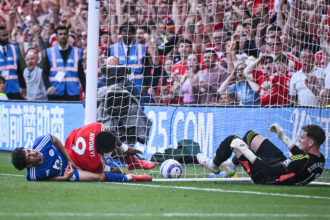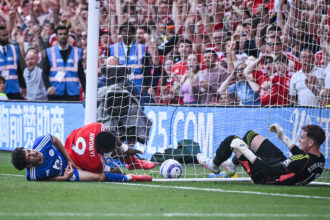This season’s FA Cup campaign concludes on Saturday when Manchester City take on Crystal Palace in the final at Wembley.
There will be no celebrities having a pre-match kickabout, at least one of the teams might be wearing jeans and the King is unlikely to hand over the trophy.
But there will be a pre-match hymn, royalty will play a role, at least one side will be suited and booted and, at the end of the game, both sets of players will climb a flight of stairs to receive medals.
Advertisement
It is all part of the quirky, showpiece occasion which was first held at the Kennington Oval in 1872 and has been staged at Wembley — with a few exceptions — for more than a century.
“The FA Cup stretches back to the 1870s as a Victorian event, then it became more of a social event for ex-public school teams, and by the First World War it had become a mass, popular event at the Crystal Palace but it was still quite informal,” says Dr Alexander Jackson, curator at the National Football Museum. “It changed when it went to Wembley in 1923.”
In the past 102 years, traditions and rituals have become as big a part of FA Cup final day as the football. Here are just a few…
Communal singing
A hymn written by a dying Anglican cleric in the 1800s might not scream ‘pre-match razzmatazz’, but the pre-kick-off rendition of Abide With Me has become a staple of the build-up to FA Cup finals.
It was not always the case. The traditional song dropped out of the cup-final routine in the 1970s and 80s as fan culture evolved and it was considered outdated.
But this century it has been reintroduced with a modern twist, often performed by operatic singers around 15 minutes before kick-off.
The tradition began almost 100 years ago as part of a bigger push for “community singing”.
In his book, The Cup: A Pictorial Celebration of the World’s Greatest Football Tournament, the author and journalist Richard Whitehead wrote: “It was first sung in 1927 before the Arsenal-Cardiff City final. Some accounts suggest that it was introduced at the initiative of TP (Thomas) Ratcliff, who conducted the pre-match community singing.
“Other versions claim FA secretary Frederick Wall wrote to Buckingham Palace to ask what King George V might like to hear. He replied that ‘Abide With Me’ was a favourite of his and Queen Mary. ‘In the post-war cup finals in particular, there was a fervour in the rendering of the hymn which made it an occasion in itself,’ wrote Wall’s successor Stanley Rous.
“Even so, Rous decided to drop it in 1959 but the decision was met with howls of protest and he had to backtrack.”
Abide With Me being performed ahead of the 2024 FA Cup final (Photo by Mike Hewitt/Getty Images)
Royalty
After Abide with Me has been sung and the teams have walked onto the pitch, Wembley will reverberate to fans from both sides singing God Save the King, the national anthem and a reminder of the historic links between the FA Cup final and Britain’s Royal family.
The ties were not so close from the beginning. “King George V was the first monarch to attend the FA Cup final, in 1914, and it was dubbed ‘the Royal cup final’,” says Dr Jackson.
Advertisement
“Through the 1900s, we started to see Royals attend other football matches and I think the Prince of Wales went to either an FA Cup final or an England international.
“George V himself went to an Army vs Navy game in his role as commander-in-chief of the Armed Forces.
“He was encouraged to go to the 1914 cup final by a friend and a confidant, Lord Derby, who was an aristocrat with quite a skill for understanding how to popularise and keep the monarchy in the public eye in a positive way.
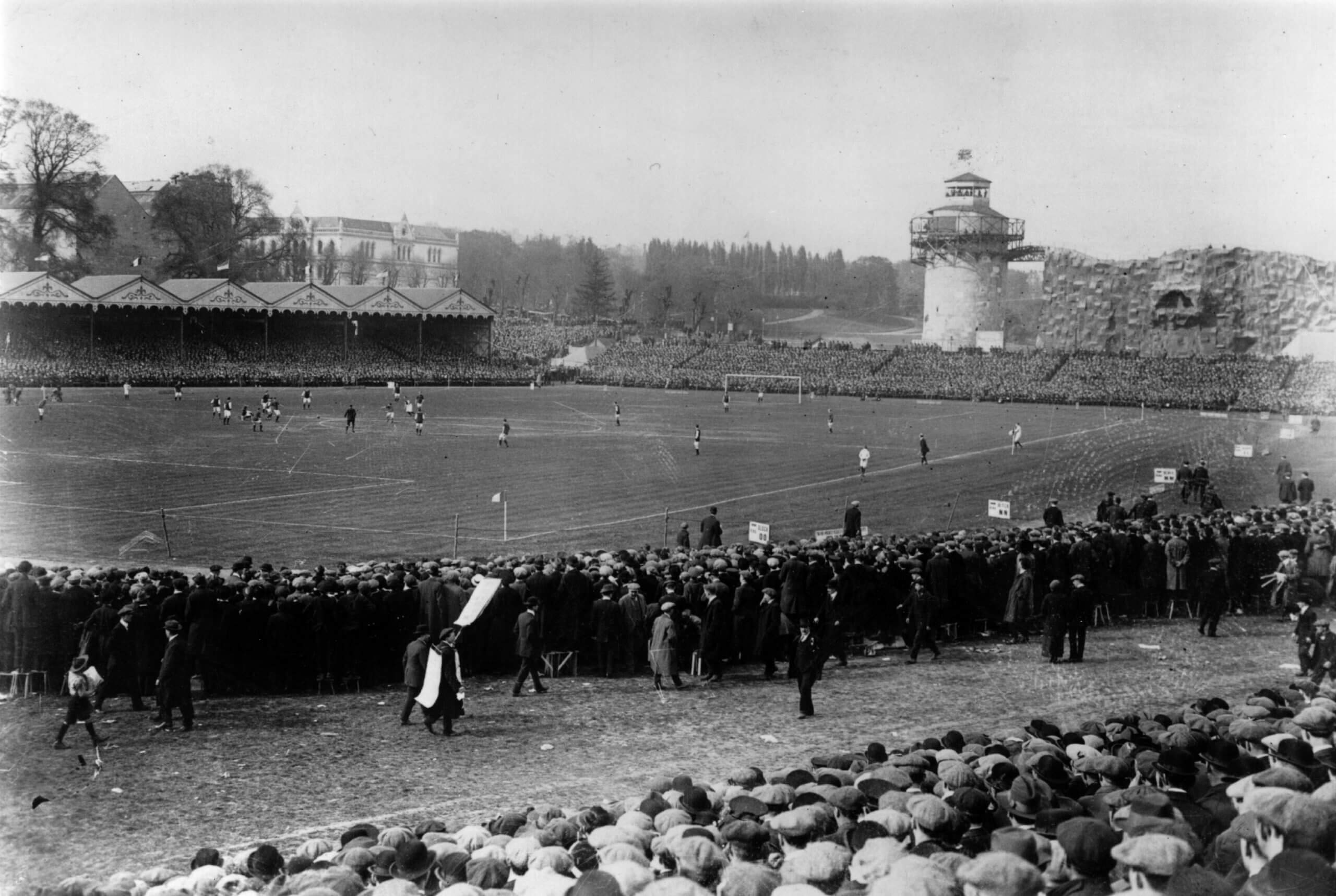
The 1914 FA Cup final, held at Crystal Palace, between Burnley and Liverpool (Hulton Archive/Getty Images)
“From the 1870s until 1913, it was aristocrats or members of the FA who were the guests of honour.
“From 1914 until the 1970s, it was predominantly the monarch who was guest of honour and who presented the trophy with a few exceptions, such as when the monarch was overseas or ill. For instance, in 1952, the cup was presented to Newcastle United by Sir Winston Churchill.”
In more recent times, William, Prince of Wales, a fan of Aston Villa and the Football Association president, has become a cup final regular.
Pre-match entertainment
In the more homogenised world of 21st-century football, pre-match entertainment at a cup final might feel very similar to the high-profile fixtures of the Premier League.
In the past, though, it was very different. In the 1980s — often regarded as one of the golden eras of the cup final — while standard league games often passed with almost no additional entertainment, cup-final day at Wembley was different.
On the pitch before the main match, teams of fans of celebrities sometimes played out their own contest, and from 1971 to 1977 supporters from the competing teams took part in a special edition of the BBC show It’s a Knockout.
It all began in the 1920s with the more traditional ritual of community singing.
“They had this repertoire of different songs which culminated in Abide With Me,” Dr Jackson says.
Advertisement
“This was the inter-war period and there were concerns about social cohesion in terms of communism and socialism and the depression years were coming, with the economic impact on Britain.
“So community singing was an idea to try to bring people together and they started off by using a lot of old wartime songs, trying to hark back to that togetherness of the war years.
“They handed out song sheets, there were conductors and they had bands and some of them were picked up on early radio broadcasts with the idea being that people at home could get involved.”
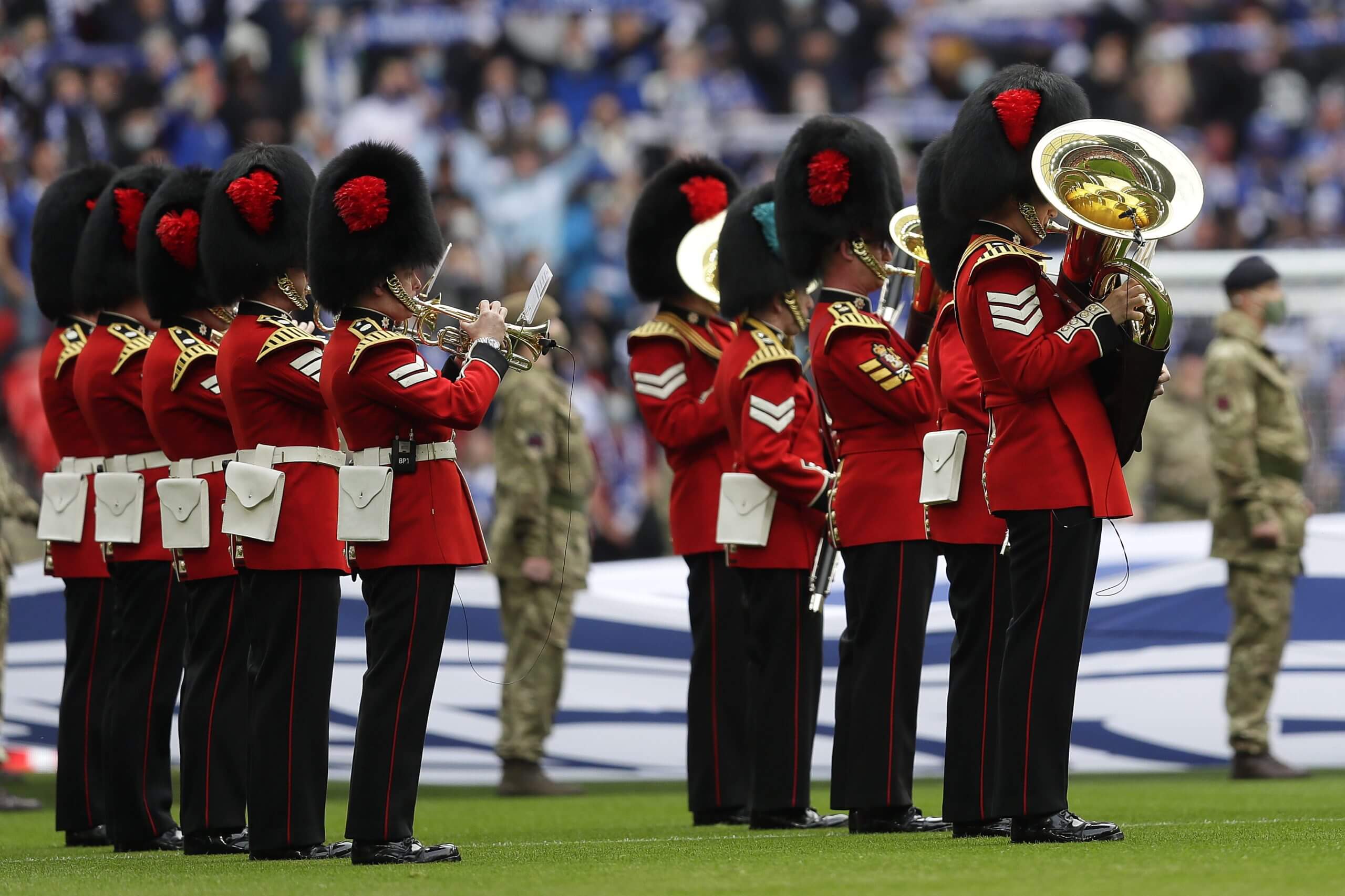
(Kirsty Wigglesworth – Pool/Getty Images)
Players’ suits
One of this year’s finalists, Manchester City, caused something of a stir in the past two seasons when they arrived at Wembley in casual clothing — trousers and branded cup-final T-shirts in 2023, jeans and club polo shirts a year later.
Last year’s winners, Manchester United, by contrast, arrived at the stadium in tailored Paul Smith suits, upholding a tradition dating back many years that teams who reach the final get measured up in advance for matching, smart attire.
It is a tradition that Crystal Palace will stick with this weekend with the manager, Oliver Glasner, also confirming that he will swap his customary casual garb for a suit at Wembley.
“Into the 1950s, players would have been turning up in suits automatically for all games and the club blazer would have been standard dress, reflecting wider society,” says Dr Jackson.
“That’s what men wore — trousers, a jacket, a shirt and a tie. Men’s casual wear hadn’t really developed massively.
“By the 60s and 70s, men’s fashion was changing, becoming more casual, but to a certain degree, once you start having more TV coverage, making sure everyone was well dressed was probably about clubs starting to think about their image from a media point of view.
“And then players wearing their suits, walking around the pitch before the game, then going back inside and getting changed into their match kit became part of the ritual of the FA Cup final.”
It does not always go well, however. In 1996, Liverpool turned up in cream Armani suits, were beaten 1-0 by Manchester United, and were forever tarnished, probably unfairly, by a suggestion that they took fashion more seriously than football.
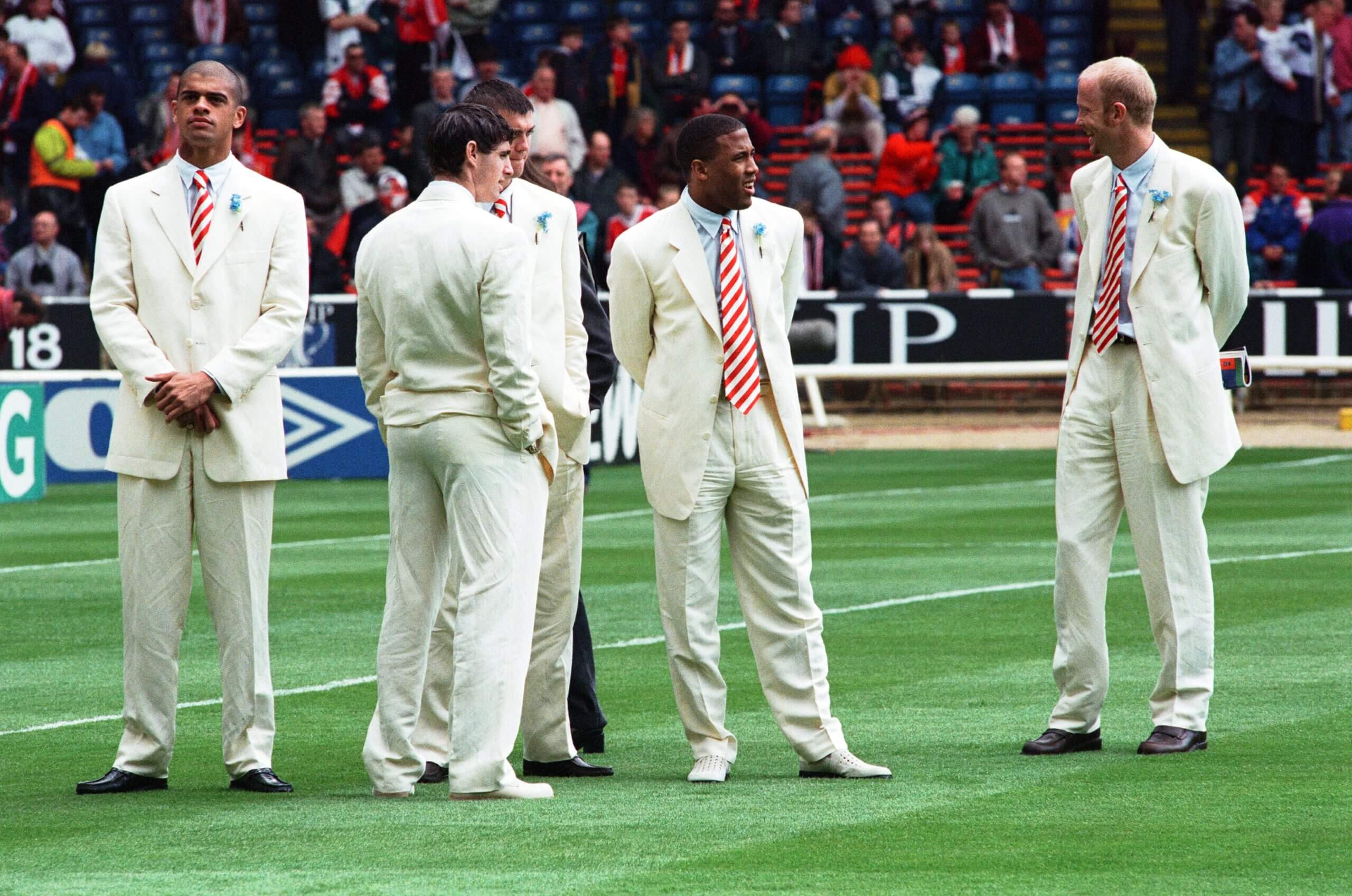
Liverpool in their infamous cream suits before the 1996 FA Cup final (Eddie Barford/Mirrorpix/Getty Images)
Climbing the Wembley steps
Most cup finals now end with players receiving the trophy on the pitch, usually on a specially-erected podium that allows perfect branding opportunities.
But in the FA Cup, dragging weary limbs up the steps to the Royal Box to collect medals and silverware has become a staple part of the day.
That changed from 2001 to 2006 when, with Wembley being redeveloped, the final moved to Cardiff, where the then Millennium Stadium did not allow for a walk through the stands and up to the second tier.
Advertisement
But at Wembley, the tradition is upheld. It is not unique — Copa del Rey winners Barcelona and runners-up Real Madrid climbed the steps at the Estadio La Cartuja in Seville last month — and other finals played at Wembley, including the Carabao Cup and the EFL play-offs, have followed the same pattern. But it is unusual.
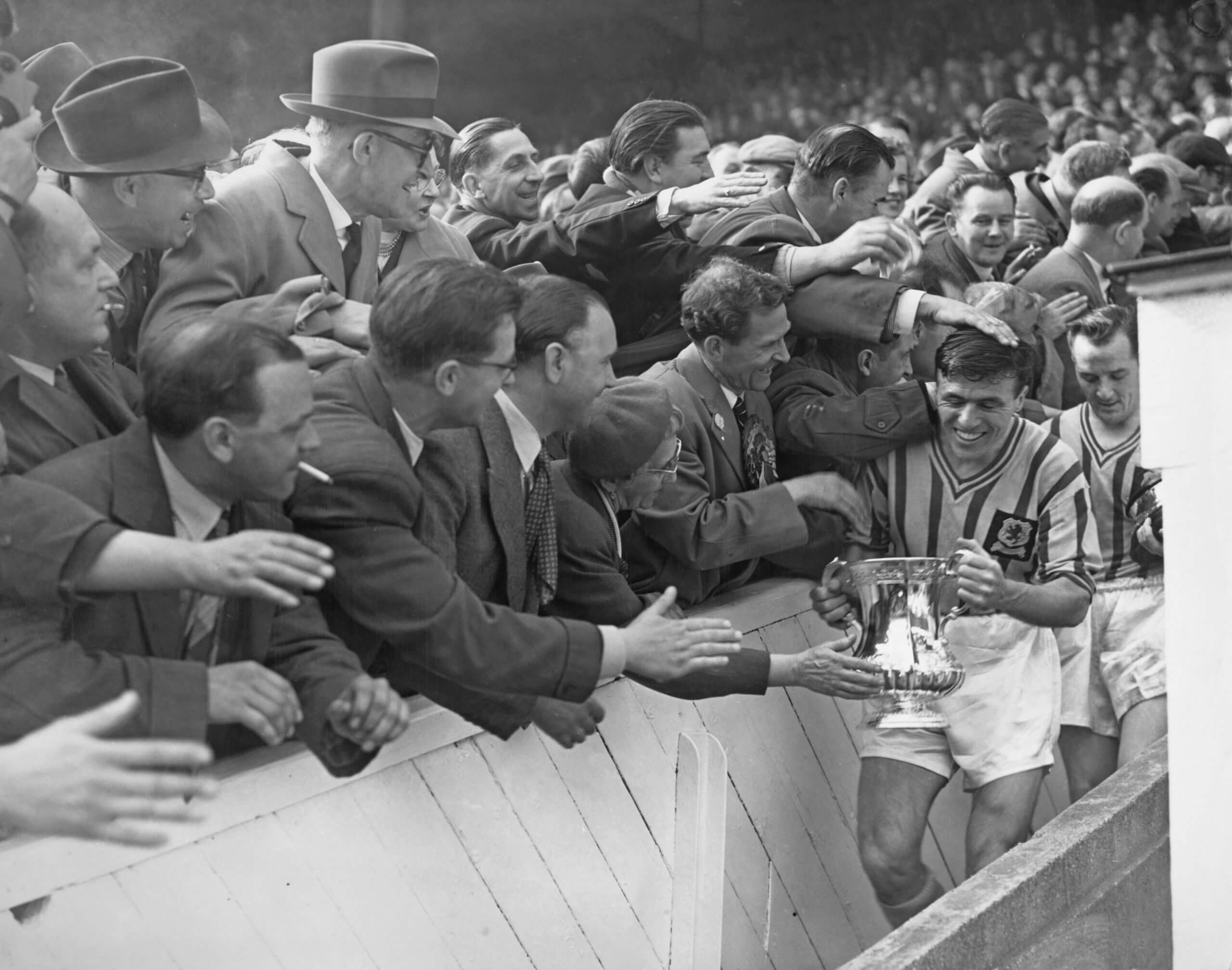
Aston Villa bringing the FA Cup down the Wembley steps after winning the 1957 final (Douglas Miller/Keystone/Hulton Archive/Getty Images).
“You can see footage from 1914, when Tommy Boyle of Burnley becomes the first man to be presented with the cup by a reigning monarch, and he goes up to the VIP area where the King and the dignitaries are,” says Dr Jackson. “So we know it was the same at the Crystal Palace.
“I think the idea was that the players rose up to them as opposed to bringing the VIPs down to ground level.
“And in the 1900s, people would flock across the pitch at the end of the game, so there would be mini pitch invasions — of an orderly nature — where everyone would walk across the pitch to get closer and watch that presentation of the trophy to the players.”
(Top photo: Ben Stansall/AFP via Getty Images)





